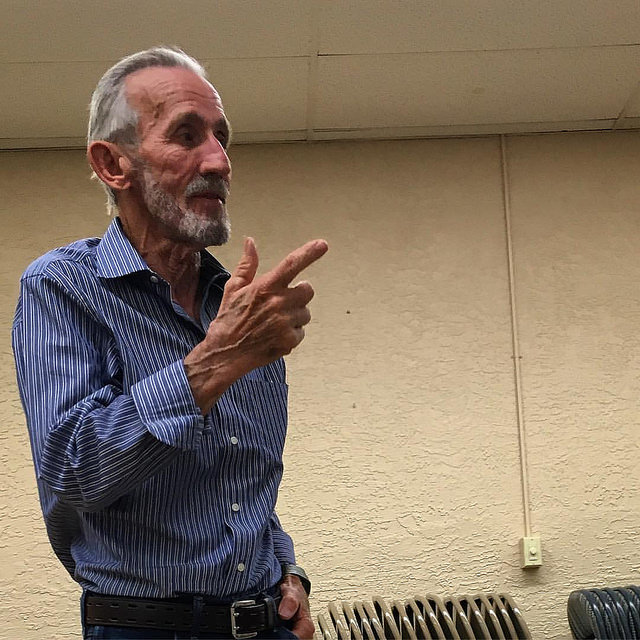
Image Credit: Greg Younger
Any time that we give a speech, we’d like that speech to be remembered by our audience. In order for that to happen, we need to use the importance of public speaking to make sure that the content of our speech is something that is going to capture the attention of our audience. We all know that stories are a great way to make this happen. The big question that we need to answer is if stories are appropriate for a business speech. The good news is that they are. When we use a story to allow our audience to visualize a situation it permits them to empathize, appreciate, and identify with what we are talking about. Now all you have to do is get good at telling business stories!
What Makes A Good Business Story
As speakers, what we need to realize is that when we tell our audience a story, it can be an experience for them. It is by telling your audience a story that you are reliving an experience that you’ve had. As you do this, you are inviting others to come along and experience it with you. The stories that we tell are transformational. Any story that you tell will create a link between your company and the story. This will allow your audience to better connect with your company.
What a lot of speakers may not realize is that we are already using stories at work. We are telling stories to our coworkers and our peers all the time. These stories may be personal stories or they may be work related about some big issue that we are currently facing. The good news about storytelling in a business environment is that it does not have to be a top-down process. Instead, peers can tell stories to peers or employees can tell stories to their bosses. When you share a story in a business environment, it can be a very powerful tool.
When we are creating a story that we’d like to use in a business environment, how should we go about building the story? There are a few points that we need to keep in mind. Our audience is expecting that our story will hang together – it won’t be made up a number of different parts that don’t seem to have a lot to do with each other. Next we need to make sure that our story sounds plausible. If the story starts to sound like we made it up, then it will take on fairy tale characteristics and people will stop paying attention. Finally, your story is going to have to match your audience’s values and their understanding of their world. If it doesn’t, then they won’t be able to understand what you are saying and they won’t be able to process your message.
How To Tell A Business Story
When you are telling a story for business, you need to be very careful to make sure that the story that you are telling is both a specific story with details and yet at the same time you need to find ways to make your story universal. You want your audience to join you as you tell your story. You want them to experience and live the story as you tell it. This means that you need to provide them with specific details about where it is occurring and the people who are involved. At the same time, you need to make sure that you are not so detailed that your audience starts to think that you are telling a story that has no relation to their life. You need to make your story universal so that everyone can see themselves living it.
The goal that any speaker has when they are telling a story is to get their audience to be able to picture the story in their heads. In order to make this happen, the speaker is going to have to use imagery. You are going to have to use words that will paint a vivid scene of the story that you are telling. Keep in mind that your audience has five different senses. Beginning storytellers often make the mistake of only appealing to the audience’s sense of sight. Experienced storytellers know that they need to include the audience’s sense of touch, hearing, etc.
Stories are powerful tools when told by a speaker. However, if you want to make the next story that you share with a business audience even more powerful, make sure that the story that you telling is your own story. Something happens when an audience knows that the person who is telling them a story is the person that all of these events happened to. There is a sense of shared experience that can develop between you and your audience. After you have told them your story, they will feel as though they have gone through the same experience that you just told them about. This will make them feel even closer to you and will allow you to connect with them.
What All Of This Means For You
Speakers have long known that adding stories to our speeches can make them even more powerful. However, the question has always been out there if adding stories to a business speech was a wise move and if it would enhance the benefits of public speaking. It turns out that the answer is yes. Even business audiences need to be visualize a situation because it permits them to empathize, appreciate, and identify with what we are talking about.
Speakers need to understand that their business stories can be transformational. It is through the telling of these stories that we are able to invite our audience to come along with us and experience what we have experienced. Speakers who may not be comfortable with including stories in their business speeches need to understand that we are already telling lots of stories at work to our peers and our bosses. When we tell a business story it has to hold together, it has to be plausible, and it has to match our audience’s set of values. When we are creating a story to tell to a business audience, we need to make sure that it is both specific and at the same time universal. In order to help our audience picture our story, we need to use a great deal of imagery when telling it. The best stories that we can tell are the ones that have happened to us.
Any time that we make a business presentation we are doing so for a very specific reason. We’re trying to get plans approved, products purchased, or perhaps secure additional funding. We need to understand that by adding stories to our speech we can have a better chance of connecting with our audience. If we are able to add stories that capture our audience’s attention, then we will have found a way to truly connect with them during our speech.
– Dr. Jim Anderson
Blue Elephant Consulting –
Your Source For Real World Public Speaking Skills™
Question For You: In a typical business speech, how many stories do you think that you can include?
![]() Click here to get automatic updates when The Accidental Communicator Blog is updated.
Click here to get automatic updates when The Accidental Communicator Blog is updated.
P.S.: Free subscriptions to The Accidental Communicator Newsletter are now available. Subscribe now: Click Here!
Note: What we talked about are advanced speaking skills. If you are just starting out I highly recommend joining Toastmasters in order to get the benefits of public speaking. Look for a Toastmasters club to join in your home town by visiting the web site www.Toastmasters.org. Toastmasters is dedicated to helping their members to understand the importance of public speaking by developing listening skills and getting presentation tips. Toastmasters is how I got started speaking and it can help you also!
What We’ll Be Talking About Next Time
In the world of public speaking, there are a number of different types of speeches that we can give. One of the most difficult speeches is called the roast. Just in case you’ve never given a roast before, a roast is intended to both honor and gently tease the guest of honor in front of his coworkers, family, and friends.
All too often what speakers forget is that a roast is not done to punish the person being roasted, but rather to honor them and pay tribute to them. The problem is that many roasts are not done very well and end up leaving the person being roasted feeling bad. What’s the right way to do a roast?

